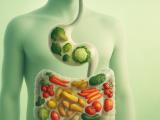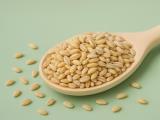Approximately 30% of the world's population has too little iron in their blood, leading to anemia – professionally known as anemia. Women of childbearing age, pregnant women, children, and the elderly are most affected. And how do you notice it? By feeling tired, lacking energy, having trouble concentrating, breathing faster, sometimes experiencing headaches, or being more irritable. Some lose their appetite, while others feel like something is always missing – but they don't know what.
But before reaching for dietary supplements and pills, let's walk through the plant sources of iron together. What nature offers is often gentler, less burdensome for the body, and wonderfully effective – if only we know how.
How much iron do we actually need?
First, let's clarify that. The amount we need varies by age and sex. We won't be too dry, but some numbers will be useful to you:
- Infants (up to 6 months): around 0.27 mg of iron per day – most of it comes from breast milk.
- Children (1 to 3 years old): about 7 mg per day.
- Boys (14–18 years old): already need 11 mg.
- Adult men: around 8 mg per day.
- Girls and women (14–50 years old): as much as 18 mg – due to menstruation.
- Women after menopause: need the same as men – 8 mg.
Now to the essence – how can we get all this from plants?
- Iron in plants: the power of the green world
Many will try to convince you that iron from plants is less effective than that from meat. It is true that the body absorbs it somewhat more difficultly, but – and this is a big but – if you know a few tricks, this difference is almost negated.
Let's look at some of the best plant sources of iron that you should include in your diet:- Spirulina – just one teaspoon (about 5 grams) contains a whopping 5 mg of iron! It's a blue-green alga known to those interested in detox. It has a unique taste but is extremely nutritious.
- Soy, a cup of cooked, brings you around 4.4 mg. It also contains protein and fiber.
- Pumpkin seeds – in 30 grams (small handful) there is 4.2 mg of iron. This is a snack that can really help you.
- Quinoa, which has become a star among grains in recent years, has around 4 mg of iron in 120 grams.
- Blackstrap molasses – many don't even know what this is. It's a dark, thick syrup that remains as a byproduct in sugarcane processing. One tablespoon – 4 mg of iron!
- Tomato paste (120 g): almost 4 mg, plus it has antioxidants!
- White beans, half a cup – 3.9 mg.
- Cooked spinach, half a cup – 3.2 mg. Of course, Popeye didn't just choose this vegetable for no reason!
- Dried apricots – six halves have around 3.1 mg.
- Prune juice, a glass – around 3 mg.
- Lentils, a cup of cooked – also about 3 mg.
So, if you eat a handful of pumpkin seeds, some tablespoons of beans, and a cup of quinoa every day, you're almost there.
How do we improve iron absorption?
This is where ancient folk wisdom comes into play, confirmed by science today.
One of the most well-known is: Always pair iron with something acidic! Why? Because vitamin C from acidic fruits (like lemons, oranges, strawberries, or even peppers) helps the body absorb iron better. If you eat beans, season them with lemon juice. If you eat lentils, add a little tomato or pickled turnip.
Also watch out for obstacles
Tea and coffee, especially black tea and strong coffee, contain polyphenols – substances that bind iron and make it less accessible. If you have issues with anemia, opt for herbal teas, at least an hour after a meal.
Calcium found in dairy products interferes with iron absorption. This doesn't mean milk isn't good, but it should not be in the same meal as an iron-rich dish.
And something very interesting: if you cook in cast-iron cookware, a small amount of iron is released into your food – and it's very beneficial! Old grandmothers knew how to cook in such pans, and believe me, it wasn't a coincidence.
Additional research confirming it all
A study published in the scientific journal The American Journal of Clinical Nutrition showed that iron absorption from plant sources doubles if consumed simultaneously with vitamin C. Another study from 2022 (by Harvard University) confirmed that vegans, who combine their food well, are not at all behind omnivores in blood iron levels.
The World Health Organization states that the highest cases of anemia are in countries where the diet is based solely on white rice or corn – where there is no diversity and no foods rich in iron or vitamin C.
Folk experiences that should not be overlooked
Elderly people from Prekmurje have always said: "For blood, there's beet, for strength, there's lentil!" And they were not mistaken. Fermented sour cabbage contains a lot of vitamin C, while lentils contain plant iron. When they are together on a plate, they work wonders. Even syrup made from blackstrap molasses and iron wine were once very popular. Iron wine was made with the addition of herbs and red wine, and today it can be found in pharmacies as well.
You can get iron without meat – you just need to be smart about it!
So, if you don't eat meat – whether for health, environmental, or ethical reasons – it doesn't mean your blood will be water. On the contrary, with smart choices of plant-based foods, a bit of acidic help from vitamin C, and some simple tricks, you can build a strong, healthy body full of energy.
Remember – fatigue is not always a result of stress or lack of sleep. Sometimes, your body is simply telling you: Give me iron! - Spirulina – just one teaspoon (about 5 grams) contains a whopping 5 mg of iron! It's a blue-green alga known to those interested in detox. It has a unique taste but is extremely nutritious.









 Would you like to be informed about news on the website?
Would you like to be informed about news on the website?

